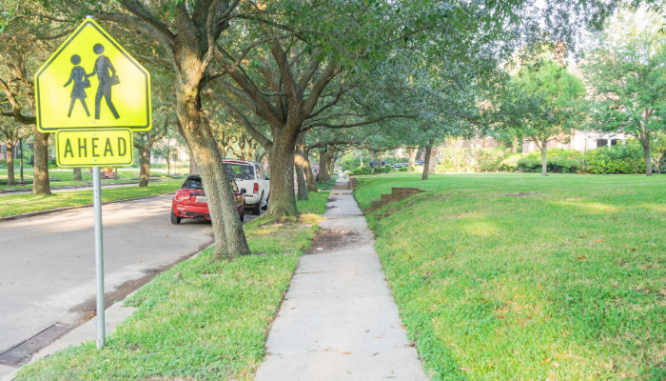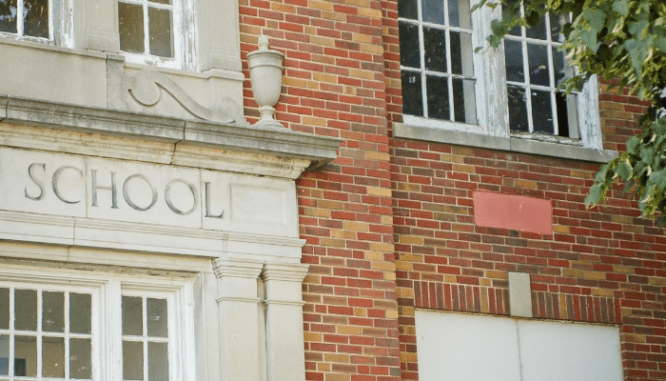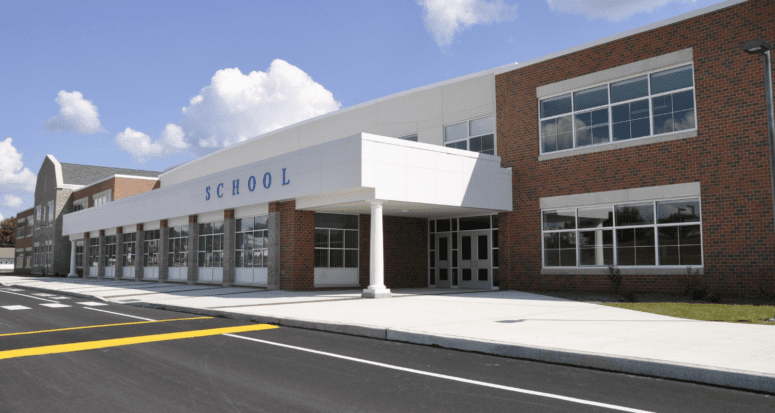How Does Your School District Impact Nearby Property Values?
- Published on
- 5 min read
-
 Valerie Kalfrin Contributing AuthorClose
Valerie Kalfrin Contributing AuthorClose Valerie Kalfrin Contributing Author
Valerie Kalfrin Contributing AuthorValerie Kalfrin is a multiple award-winning journalist, film and fiction fan, and creative storyteller with a knack for detailed, engaging stories.
“I had a client who basically wanted a $500,000 house. Where they wanted to go, they could not get a $500,000 house,” says Michael Whitney, a top-selling real estate agent in Rockingham County, New Hampshire. “I recommended they go 10 miles away, and their reply was:
“‘Absolutely not, because I don’t like the school system.’”
Whitney’s experience shows just how passionate many homebuyers feel about school quality and the education of their children. It also echoes data from the National Association of Realtors showing that 26% of recent homebuyers were influenced by the quality of their school district when selecting a neighborhood. Among buyers ages 30 to 39, that percentage jumps to 46%, followed by 36% of buyers ages 22 to 29.
As a homeowner, you’d like to know about all of the factors (internal and external) that impact your property value — and your school district is a big one. If your house falls within the boundaries of a great district, you’ll likely be able to sell it for more than if you were in an average one because of the increased buyer demand.
At the same time, the property taxes used to fund local schools can be a deterrent for some buyers who don’t benefit from the spend on education directly. Here we’ll explore the ways that property values and school quality in the U.S. are inextricably linked, and how you can market your school district to attract more interest in your home.

Same street, similar properties, different values
“Location is everything,” says Mason Spurgeon, a certified general real estate appraiser since 2004 who handles appraisals in Missouri, Illinois, and Iowa. “A property’s school district can have a huge impact on value. The better the school district, the more desirable the property. Some buyers will only purchase properties in areas with certain schools.”
According to a 2013 study, people paid an average of $50 more per square foot for homes in top-ranked school zones compared with homes in districts with schools of average quality.
In the Los Angeles metropolitan area, for example, this means that homes in a top-tier school district cost an average of 79% more than those in an average district.
One analysis from the National Bureau of Economic Research found that overall, every $1 spent on school funding increases property values by about $20.
Spurgeon notes that comparable properties on the same street can be worth more or less depending on their school district (the home zoned in the quality district will sell for more, despite being comparable in other regards).
Although Spurgeon does not directly adjust for school district ratings in the comparable sales grid of an appraisal report, he will check that comparable sales are located in the same location and district as the property he’s evaluating.
How school enrollment impacts property values
One 2019 NAR analysis found a positive relationship between public school enrollment and home prices. Specifically, counties with the highest gains in public elementary- and secondary-school enrollment over seven years experienced an average 33% increase in home prices.
This enrollment growth may reflect stronger employment, or at least more goods and services, the analysis says, forecasting that housing demand also would increase in these areas.

Schools are one piece of the package, parents say
Although schools can be a deciding factor in purchasing a home, parents who spoke with HomeLight said they also considered the big picture.
Kristin W., a law firm office manager who lives in Palmetto, Florida, bought a newly built 2,400-square-foot house with her husband and two young children in 2017 after living in a rental. Their daughter was about four and a half, and their son was under two at the time. “I saw heading to kindergarten as my deadline to have her settled in the school she’d be in for years,” Kristin recalls.
Before buying, she and her husband looked at several homes zoned for an elementary school that they liked, but the middle school grades varied; their current home is zoned for elementary and middle schools both graded “B” during the 2018-19 school year.
“Our property taxes are much higher, as is our mortgage, and we now pay HOA fees — all expenses we feel are completely worth the transition,” she says.
On the flip side, lower property taxes can be a plus
Sometimes a lower-rated school district can work as a benefit to buyers, such as retirees, land investors, or farmers — all people who like to keep expenses low, he adds. “Usually, the better the school district, the higher the property tax rate,” says Spurgeon.
Merrilyn C., a private middle-school teacher who has a 15-year-old daughter and 12-year-old son, moved to Orange County, Florida, from a more rural area in the state — not for the schools, but because of her husband’s job transfer. “It was a big change,” she says.
Orange County is home to Orlando, best known for Walt Disney World and other theme parks, while their previous neighborhood was near acreages where people kept horses, cows, goats, and chickens.
Their three-bedroom home is roughly a half-mile from Seminole County, which also has highly ranked schools as well as higher property taxes.
“We wouldn’t have ruled out a house in Seminole County because of property taxes, but we do like having lower taxes where we are,” Merrilyn says. “They are definitely higher than the area we moved from, but we are in a much more populated area now, so we expected it.”

How taxes connect school districts and home values
The evidence is clear: Homes in good school districts tend to sell for more. But whether property values are higher because of a good school district — or whether a school district ranks better because of high property values — is a chicken-or-the-egg kind of dilemma.
Here’s why:
The U.S. Department of Education keeps tabs on all schools through the Every Student Succeeds Act, which specifies accountability plans that each state submits to the federal agency addressing goals such as proficiency on tests and graduation rates.
Your state’s Department of Education compiles these accountability reports (here’s one example), which many people refer to as “school grades.”
School district borders indicate who is eligible to attend which schools. Funding for those schools is tied to local taxes, which determines the resources that these schools have for the children they serve. (The money also supports community safety, infrastructure, and other public projects.)
According to a report from NPR, it’s typical for local funding to account for 45% of a school’s budget. Oftentimes much of that local funding is drawn from property taxes. Since property taxes are calculated as a percent of property value, higher property values translate to more tax revenue to give to schools, which in turn help schools pay for teachers and textbooks.
If you look into why a school earns an A or an F grade, you can see how property taxes (and the resources they provide) would play a role in their performance and determine the quality of education a district can offer.
Racial disparities in school funding
You can’t talk about the relationship between school districts and property values without acknowledging the lasting impacts of America’s history of segregation and redlining, and how these practices still drive racial disparities in school funding today.
Even though the U.S. Supreme Court in 1954 ruled that segregated public schools are unconstitutional, America’s school funding system still relies on geography (that’s the local property tax funding we discussed above) and community wealth, says EdBuild, a nonprofit organization that investigated school funding inequities from 2016 to 2020.
The system “has inherited all of the historical ills of where we have forced and incentivized people to live,” these researchers say, because small districts concentrate resources and amplify political power.
This research found that predominantly white public school districts enroll just over 1,500 students while nonwhite districts serve over 10,000. However, the latter receives an average of $2,226 less than the former because of local and state resources, a nationwide gap of $23 billion.
The larger the tax base — meaning the larger these districts are — the more balance the researchers found between a wealthy suburb and a less-wealthy rural or urban one.

How to talk about school districts when you’re selling
NAR’s Code of Ethics prevents real estate agents from steering a buyer toward or away from a community based on their race, color, religion, gender, disability, familial status, or national origin — all characteristics that would violate the 1968 Fair Housing Act.
Rather than offer their perspective on whether a school system is “good” or “bad” (which could be “code for racial differences,” NAR says) agents can instead refer clients who ask about schools to the state’s education department’s rankings so that they can view the data themselves.
Other agents might provide a handout that invites clients to be more specific as far as what a “good” school or school district means to them. Is it one that offers accelerated courses or special education programs? Does it have a variety of sports teams or clubs?
For sellers, a listing within a top school district can be a selling point as long as “you have that piece of paper that shows that they’re the top schools in the state,” Whitney says. “You’re going to be very careful because you can’t even give advice [such as] … ‘That’s the best school.’”
One way your agent can provide information about schools upfront is by including a list of district schools in your property’s online listing (sites like Zillow will also include the school’s proximity to the listing, as well as its corresponding “GreatSchools” rating).
If you’re concerned because you don’t live in a top school district, talk to your agent about other pluses to market about your home and your community — and make sure your agent has provided a sheet listing local tax rates so buyers can take any savings into account.
Header Image Source: (Cynthia Farmer / Shutterstock)
